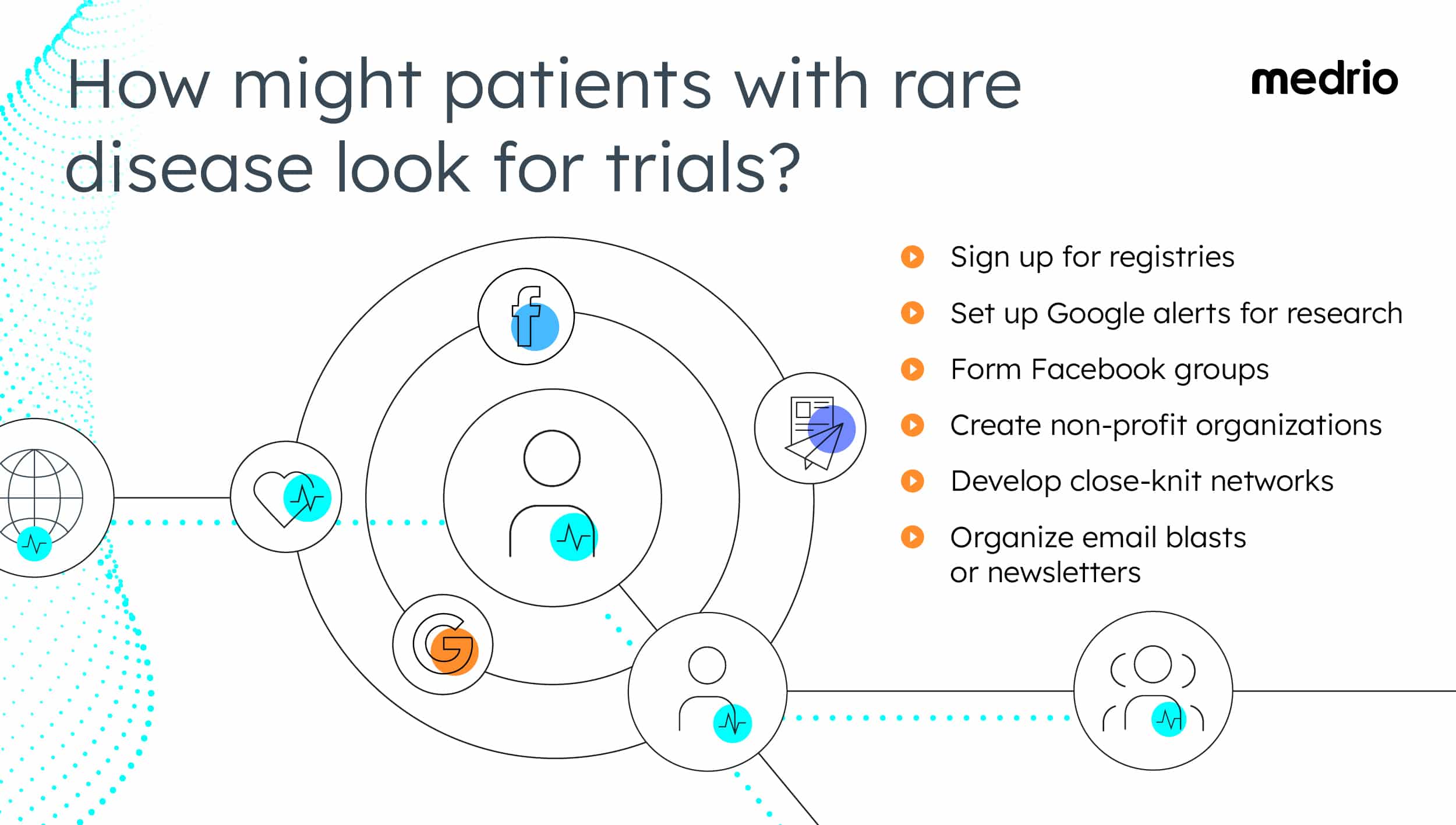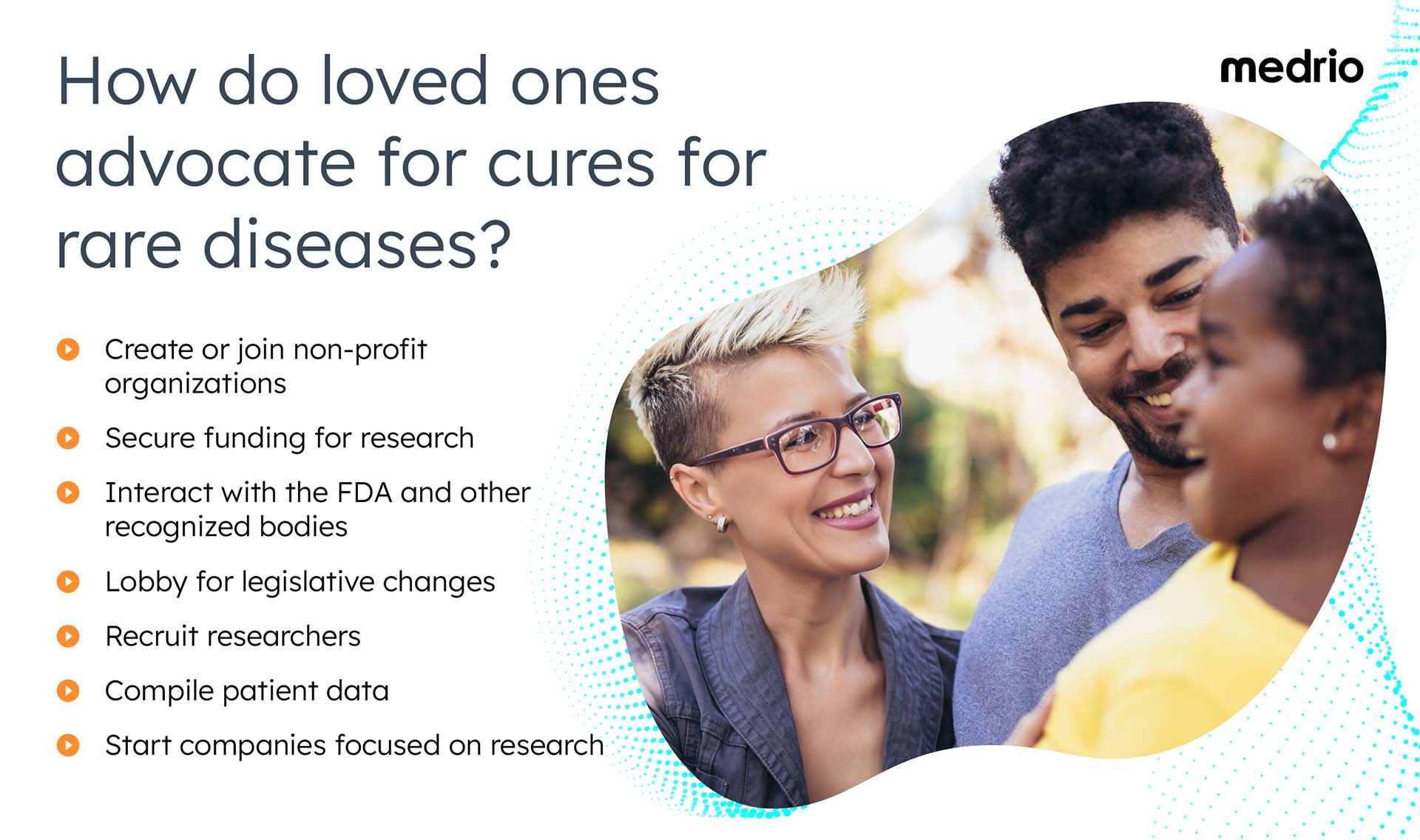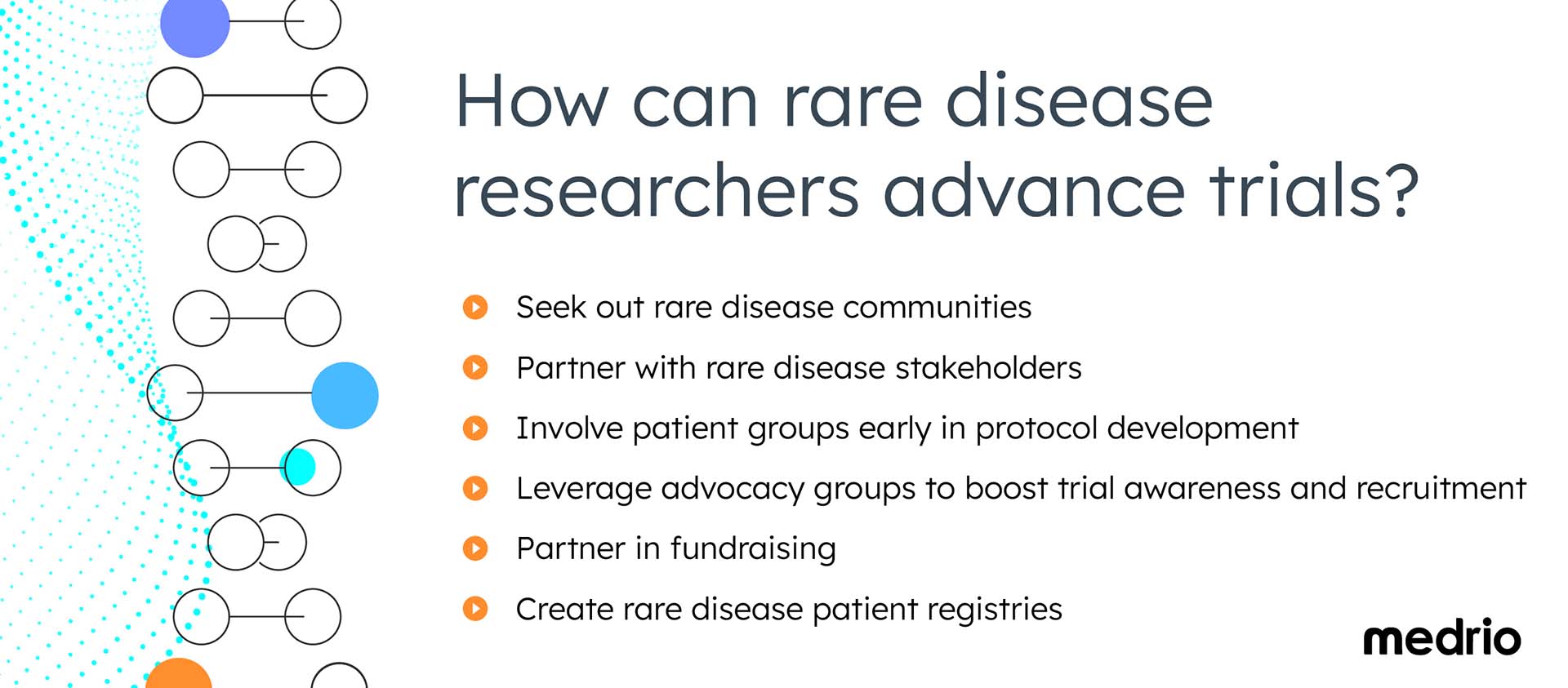Currently in the US alone, there are 7,000 recognized rare diseases, many of which have no treatments. But research is gaining momentum—in 2022, more than half of the FDA’s novel drug approvals were treatments for rare or “orphan” diseases.
Undoubtedly, the uniqueness of participants and their loved ones fuels progress in rare disease research.
In particular, they tend to be more eager than other patient populations to participate in clinical research. Both patients and their loved ones may also become directly involved in raising awareness and funding for research and treatment.
The tenacity of this courageous, innovative, and determined population of people is unmatched. Harnessing this motivation and determination has the power to push research forward faster.
In this article, you will learn:
- Where to look for participants for rare disease research
- How to leverage ongoing funding and advocacy for rare disease cures
- What actions to take to improve recruitment and engagement in your rare disease trials
To learn more about rare disease trial design for better participant engagement, read our Rare Disease Research Guide.
Participant Engagement in Rare Disease Trials
With few answers and limited options, individuals with rare diseases and their loved ones tend to actively search for trials. They may even set up Google alerts to flag the slightest movements within research.
Typically more motivated to seek out community, a patient with a rare disease may:
- Form Facebook groups
- Create non-profit organizations
- Develop close-knit networks
- Organize email blasts or newsletters
As a whole, this group of patients can sometimes be less risk-averse than patients who have access to more established treatment options.
Depending on the circumstances, those with particularly challenging rare diseases may be willing to exert greater effort to participate in rare disease research. Even if there is no active research happening, a patient with a rare disease may jump at the chance to sign up for rare disease registries.

Shaping Rare Disease Research Together
Loved ones of patients with a rare disease are known for playing a significant role in expanding care options. In some cases, patients with rare diseases and their families have gone so far as to become directly involved in lobbying for new treatments and building effective clinical trials.
Determined for cures, families and loved ones may regularly:
- Organize and mobilize in the quest for cures
- Secure funding for research
- Interact with the FDA and other recognized bodies
- Lobby for legislative changes that impact the speed and progress of rare disease clinical development
These below inspiring stories illustrate the determination and direct involvement of loved ones and families in rare disease clinical trials.
From meeting with the FDA to starting companies, collecting data to raising funds, rare disease stakeholders often have huge investments in upcoming clinical trials.

Advocacy and funding for rare disease research
Take the inspiring story of Pat Furlong, a mother who began advocacy work for Duchenne muscular dystrophy (DMD) in the 1990s after her two sons were diagnosed with the fatal disease.
Her non-profit Parent Project Muscular Dystrophy (PPMD) has secured hundreds of millions of dollars in funding for research and beyond—including some of the earliest work on gene therapy and $2.4 million towards the trial testing of what would become the FDA-approved drug Elevidys.
Furlong’s dedication to finding a cure, which continued long after her sons aged out of potential cures, is not an anomaly in rare disease research.
Driving new rare disease discoveries
Then there’s the story of Brad Margys. Although his two sons missed the window to receive treatments for A-T, a rare genetic disorder that causes severe neurodegeneration, Margys remains dedicated to finding a cure through fundraising, recruiting researchers, and compiling patient data.
When Margys met with a physician interested in conducting A-T research, he shared a database containing the sequenced genomes of 235 children with A-T. Researchers were ultimately able to analyze the patient data, identify genetic mutations causing A-T, and determine treatable mutations.
Creating new research opportunities
Finally, in a true story so gripping it became a Hollywood movie, a father named John Crowley formed the biotech company Amicus to accelerate rare disease research after his childrens’ diagnosis of Pompe disease, a severe neuromuscular disorder.
Today, Amicus runs trials for Fabry Disease, Batten disease, and Pompe disease.

Actions for Rare Disease Clinical Researchers
Rare disease research can be challenging. Knowing more about participants and where to find them can improve clinical trial engagement and patient experiences.
Seek out rare disease communities
These are often hosted online on Facebook, Instagram, or other social platforms. Set up alerts and follow hashtags for diseases of interest.
Partner with rare disease stakeholders
Patients with a rare disease and their loved ones are the experts on their disease. They can offer unique insights about day-to-day realities that may help inform rare disease trial design and elevate research quality.
Involve patient groups early in protocol development
Invite patient advocacy groups to review clinical trial feasibility and design to avoid preventable delays due to design oversights.
These groups are well aware of relevant considerations, which is why regulatory bodies encourage patient involvement in trial design. For example, the FDA is currently holding listening groups by disease state.
Leverage rare disease advocacy groups to boost trial awareness and recruitment
Advocacy groups are often highly organized and ready to mobilize. Alerting them of a new trial can create a groundswell of support, which may greatly reduce recruitment timelines.
Partner in rare disease fundraising
Rare disease stakeholders tend to be highly invested in finding treatment and adept at gathering resources. They may be willing to help crowdsource funding or lead other fundraising efforts.
Create rare disease patient registries
Building a database of persons affected by a certain rare disease may support rapid recruitment and onboarding once a trial is up and running.
Regulatory bodies may insist that sponsors make a registry publicly available to advance research faster. Regardless, registries must always meet HIPAA guidelines and protect patient confidentiality. In some cases, a physician registry may also be effective in contacting interested physicians with access to relevant patients.
Rare disease registries are going mainstream. In 2013, the European Union Committee of Experts on Rare Diseases (EUCERD) published recommendations on patient registration and data collection. The guidelines emphasize interoperability, in part by collecting common data elements (e.g., gender, age of onset, diagnosis of disease, consent info) on certain rare or low-prevalence complex diseases.
To learn more about rare disease trial design for better participant engagement, read our Rare Disease Research Guide.
Contributing Experts at Medrio:
- Ian Davison, RTSM Subject Matter Expert
- Melissa Newara, Vice President of Subject Matter Expertise
- Rod McGlashing, Data Science Subject Matter Expert
- Tina Caruana, eClinical Solutions (Digital & Decentralized Trials) Subject Matter Expert



